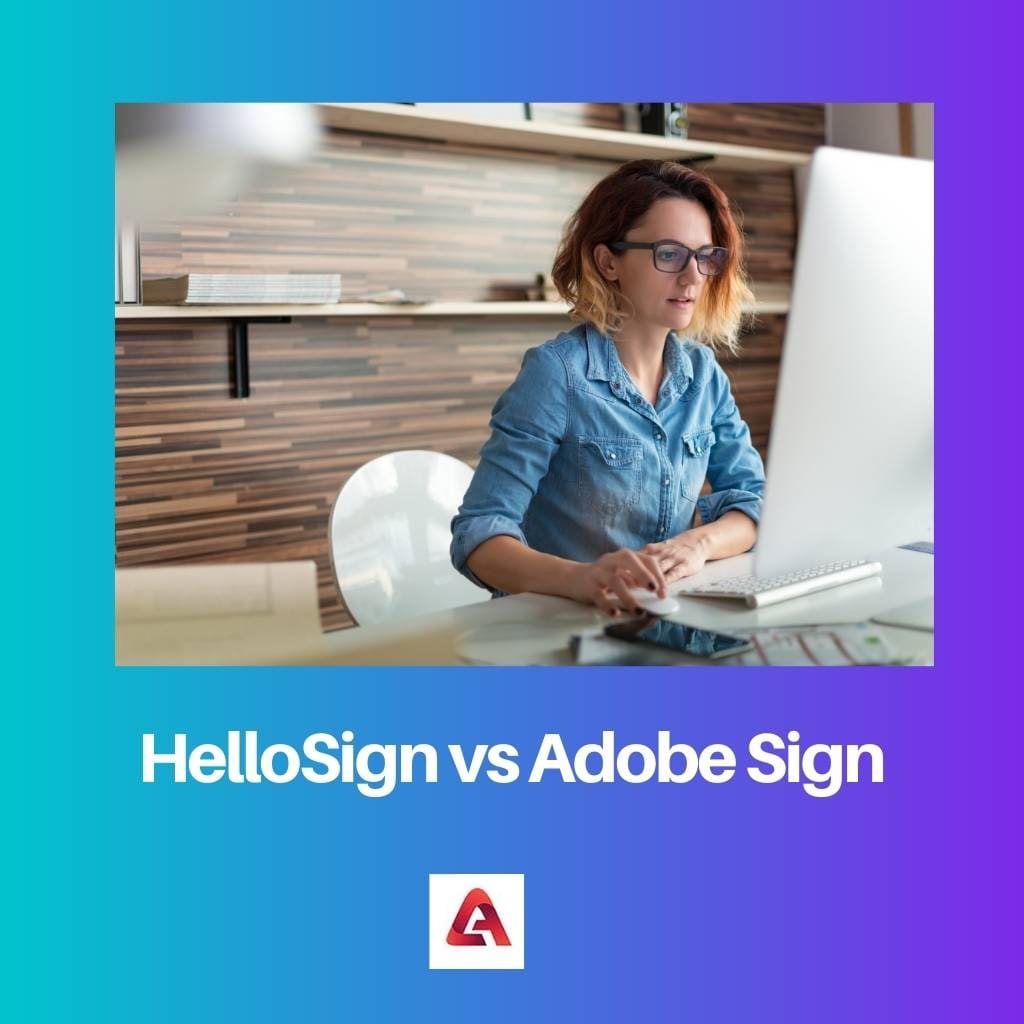Hence, as both of these software tools have a huge role to play in the industry and belong to the same category, many confuse them to do the same work.
Key Takeaways
- Adobe Sign offers a more comprehensive suite of features, including advanced automation tools and custom branding options, compared to HelloSign.
- HelloSign has a simpler and more user-friendly interface compared to Adobe Sign.
- Adobe Sign is more expensive than HelloSign but offers more value for enterprise-level users.
HelloSign vs Adobe Sign
HelloSign is an eSignature solution focusing on providing a user-friendly, efficient interface for users to sign documents online. Adobe Sign, part of the Adobe Document Cloud, offers a more comprehensive suite of document management services, including eSignatures and document tracking and management features.

HelloSign developed from HelloFax’s electronic document signing and editing as a separate paperless service product in 2012.
Adobe Sign is a digital signing tool that helps companies with the signing of custom forms, online payments, third-party integration, and more.
Comparison Table
| Parameters of Comparison | HelloSign | Adobe Sign |
|---|---|---|
| Sharing a document | It can create a signing link to share the document quickly. | It cannot create a signing link to share the document quickly. |
| Bulk sending | Bulk sending of documents for signing is not possible in HelloSign. | Bulk sending of documents to be signed is possible in Adobe Sign. |
| Size of file | A single file uploaded cannot exceed 40MB in size. | A single file uploaded cannot exceed 10MB in size. |
| Threat Protection | It has advanced threat protection. | It does not have advanced threat protection. |
| Pricing | It can create a document Id as well as merge the latter. | It neither can create documents Id nor can merge them. |
What is HelloSign?
HelloSign evolved from HelloFax’s electronic document signing and editing as a separate paperless office product in 2012.
U.S. Congress passed the Electronic Signatures in Global and National Commerce Act. Any document signed with HelloSign is legally validated by Congress in 2000, as well as the European Directive (EC/1999/93).
HelloSign is electronic signature software that offers features like bank-level security, automatic email reminders, templates that are reusable, reminders and notifications, and more such features to help business companies worldwide increase their efficiencies. This is accessible as a Salesforce add-on or as an intuitive online interface with a developer-friendly API.
It interacts with cloud storage providers such as Google Drive, Evernote Box, Dropbox, and SkyDrive, allowing users to save and access their papers across all of their accounts.
What is Adobe Sign?
Adobe Sign was initially released in January 2006 as EchoSign, which was adopted as the Electronic signature solution. Later on, EchoSign became the basis for the Adobe Sign product.
Adobe Sign is a subscription-based electronic signature program that is available for individuals, small businesses, and enterprises. It comes in 34 different languages.
Some of the features of Adobe Sign include mobile power, Microsoft 365 integration, automatic record-keeping, tracking and management by constant reminders and notifications, and so on.
Adobe Sign is meant to make business operations easier in every aspect, from signing forms with an electronic or digital signature to requesting e-signatures, building branded forms, and creating numerous workflows to gather signatures from multiple users.
It includes a free trial, and prices start at $24.99 per month per user. It allows the user to work from anywhere and on any device, ensuring legal security. This can operate on operating systems like Microsoft, macOS, iOS, and Android.
Main Differences Between HelloSign and Adobe Sign
- HelloSign provides advanced threat protection, whereas Adobe Sign does not provide any advanced threat protection.
- HelloSign can create a unique Document ID and merge documents, whereas Adobe Sign cannot create a unique Document ID or merge documents.
- https://books.google.com/books?hl=en&lr=&id=ZS0FAAAAQBAJ&oi=fnd&pg=PR3&dq=adobe+design+software&ots=s9KtCJYVDB&sig=sHj3oX51Y4BnIrRn6o9FY-9sxPo
- https://books.google.com/books?hl=en&lr=&id=LYQlOaRwpnEC&oi=fnd&pg=PR9&dq=adobe+design+software&ots=UuC3aX0UTO&sig=AK_TPFTn2W551qt6c5lKcLgokww

It’s great to see that HelloSign offers custom branding options. This can be a significant factor in decision-making for businesses.
Definitely, branding is an important consideration.
I agree, branding is vital for many organizations.
It is good to know the features of both tools. However, it would be interesting to understand further the difference between their bank-level security.
I completely agree. We need further information on this subject.
Considering the legal implications, the validation by Congress and the European Directive are key to understanding the reliability of HelloSign software.
I agree, the legal aspect is essential for making a decision.
The pricing information is very useful. It would be great to know if these tools offer a free trial.
I agree. A free trial is very helpful.
Yes, pricing and free trials are always important details.
The integration of Adobe Sign with Microsoft 365 is worth highlighting as it provides ease of access for many users.
Agreed, integration with commonly used applications is beneficial.
Nowadays, advanced threat protection is a critical feature. This is important information to include in the comparison.
Absolutely, we need to understand the security capabilities thoroughly.
The comparison table is very clear and easy to understand. Bulk sending is an important feature that not all software tools offer.
Definitely, the comparison table is very informative and useful.
Knowing that Adobe Sign supports working from anywhere and on any device is a significant advantage.
Absolutely, flexibility is key in today’s work environment.
A well-detailed comparison overall. However, the mobile support aspect would be a relevant addition.
Mobile access should definitely be part of the comparison.
Indeed, mobile support is a critical requirement for many users.
The ability of HelloSign to interact with various cloud storage providers is advantageous for users dealing with multiple platforms.
Absolutely, this feature adds great flexibility to the software.